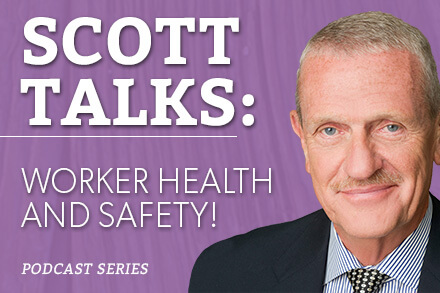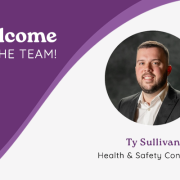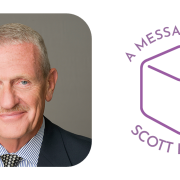In this episode we discuss what to do if an OSHA Compliance Officer shows up to conduct an inspection and why a workplace injury is a greater risk than a citation.

I want to talk a little bit more about OSHA today. In the previous podcast we talked about the whole aspect of an OSHA inspection. What we caution a whole bunch of people to do is you should always be prepared to engage in an inspection but you shouldn’t run your life and or your safety program within your company just to mitigate an inspection or the unlikely event of an inspection because it just doesn’t happen that often.
When I worked for OSHA back in the early 1970s they were still brand new and the Wall Street Journal came out and said based on the size of OSHA and the number of inspectors they had and the number of businesses that there were in the United States I think it was that every company should expect to have one OSHA inspection every 66 years or something worse than that. Nowadays I think it’s very unpredictable.
If you are having accidents where you’re sending people to the hospital, if you’re having employee complaints, or if you’re in a targeted inspection area–right now silica is one of the big areas where they’re conducting inspections specifically to look at silica exposure–if you’re in one of those areas you can expect to see OSHA more often than not. If you’re in a fairly benign industry with good loss history you’re not necessarily going to see them conducting inspection unless you have injuries or an employee complaint.
Well we always suggest and recommend is the following OSHA has been around since 1969 and 1970. That’s when it was formed. And this sounds like a crazy idea, but there’s no reason for them not to expect that you’re in compliance with the regulations in the year 2019. It’s been a very long time since they came into existence and some of their regulations have changed over time. But people get their nose out of joint thinking that OSHA is being a bad guy looking for them to be in compliance when they have every right to expect that you are. Having had decades to comply with some of their standards.
So, you shouldn’t get too upset when they cite you for things that frankly should have been complied with decades ago. Some of the most common things that we see them citing all the time and these are the same things year after year after year is the lockout tag out standard that has a communication standard fall protection. And there’s just about eight or ten others that are the same, almost the same, year after year after year.
And we find that people don’t do a very good job of complying with these programs and therefore those are the things that OSHA cites for the most. You can go to the OSHA website and in there they talk about the top 10 cited standards. So, it will give you an idea of what they would be looking for when they come through the door so that you can be proactive and try to be on top of it.
Now having said that and being in the business of helping people comply with OSHA standards if we walked into a typical employer with 50 or 100 employees and we’re asked to create and implement a lockout tagout program it’s nothing that you can do in a day or a week or even several weeks. That’s probably several months from the time we go into look at a program like that before we actually do an inspection, document all the pieces of equipment, right written procedures, develop a program, develop a policy, and do employee training.
So, what we suggest to anybody whether you use somebody like us you decide to do it on your own come up with an abatement plan or a compliance plan. Give yourself two years or three years if you haven’t got a HAZCOM program or lockout tagout program in place and set milestones by a certain date we will conduct an inspection on 25 percent of our equipment, by a certain date 50 percent 75 percent and then stay on that target because even if OSHA comes in to conduct an inspection if you if they see you’ve done little to nothing for lockout tagout program there’s no what they call good faith involved in that. So, in terms of penalties for non-compliance you will get discounts for good faith. You don’t get discounts if you have no good faith.
So the more you have a schedule that says I’m planning on taking three years to come up with a lockout tagout program and I’m 18 months through it and I’m 18 months on track with my schedule they probably will still cite you but your penalties won’t be as significant and they will be much more willing to work with you as long as you’re in the process of trying to comply with the standard. HAZCOM Hazardous communication, and the lockout tag standard are probably two of the biggest ones that are cited for, the most time consuming, and the most onerous in terms of small to medium sized companies trying to comply with.
Which is why a lot of companies don’t do it. I always say this factors back to what I call the dead body principle which is if you’re not stepping over dead bodies to come to work every day then obviously you’ve got a good safety program and nobody’s getting hurt. That’s not the case because typically you’re not having accidents because you have luck as opposed to a good safety program. And when somebody does get hurt then everybody ramps up their safety effort to try to do a much better job with safety until it’s in the rearview mirror several miles and then all of a sudden when you’ve gone through a month or two or three with nobody getting injured or nobody getting hurt on the job. Companies tend to slide back to where they were before and not do a whole lot for safety and behavior.
And you’re right back where you started without a program that’s effective or a program that works. I guess the whole bottom line in this whole OSHA thing is this is how we make a living, or part of the way we make a living. We know how difficult it is for a lot of companies to try to comply with OSHA standards because they’re not clear cut and unless you have certain areas of expertise this can be very difficult to do. It would be not unlike you deciding to become your own attorney and deal with all your own legal matters to try to become an expert in OSHA compliance is difficult at best.
And I think I’ve talked about this before and so many I the podcast I know we’d talk about it all the time but the majority of OSHA’s standards are geared towards unsafe conditions–a slippery floor, a missing guard on a piece of machinery, a forklift without brakes–as opposed to unsafe acts, people doing something that is stupid, not using the right tool, not following the proper procedures for a piece of equipment, or being the person that removes the guard so they can stick their hands in the machine and have an accident.
So, the majority of what she is looking for are unsafe conditions that are rarely the actual cause of an accident. The majority of the costs for accidents and people getting hurt on the job are people doing stupid things, unsafe acts, and unsafe work practices.
So that’s a real dichotomy. You have to be much more cognizant of the unsafe acts if you don’t want people to get hurt and then much more concerned about the unsafe conditions if you’re trying to comply with the OSHA standards. It’s a very difficult balance to try to walk with because most people start a safety program going out to look for things that are not compliant and fix them.
And yet those are rarely the things that are going to keep people from getting hurt on the job at any rate. It’s a way more complex topic than it appears to be on the surface. And if there’s anything we can do to help you please give us a call and be happy to talk to you.





